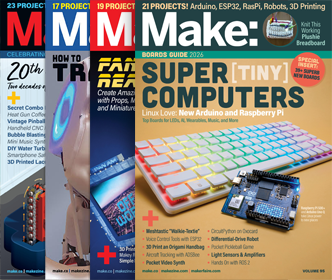


MAKE Managing Editor, Keith Hammond, sent us the link to this 60s robot Pavlovian dog simulator, created by Fred Chesson, and done with relays!
The robot dogs shown in the photograph were developed by the author in the early Sixties, when the teaching-machine “fad” was approaching its heady zenith. At the time of the design, relay logic still had a cost advantage over the contemporary RTL gates, but some transistors were employed for the “eyes” and “ears” of the automated canines.
Pavlov’s experiments into Classical Conditioning underly much of modern learning theory; hence, if a robot, android, or humanoid is to learn, it is desirable to know what conditioning is all about. On a basic level, Pavlov rang a bell, then fed the dog, measuring the animal’s response by the amount of saliva generated. After a while, the bell alone could evoke a salivatory reaction. On a human level, do our mouths not water at the mere aroma of a tasty pie? Or even at the verbal cue: “Dinner’s ready!”…? But should the announcement prove false or premature, our anticipatory responses will diminish markedly. They can, however, be readily restored, along with our faith in human nature.
Thus, the electro-mechanical dog was designed to perform the following simulations, which will be examined: conditioning (learning), extinction (forgetting), spontaneous recovery, higher order conditioning, learning curves, memory of stimuli occurrences, and stimuli hierarchy.
In operation of the simulator, pressing the RESET switch puts the robot dog at an untrained level (electronic brainwash!). Salivation being somewhat difficult to imitate, the response to feeding was represented by having the dog wag its tail, a readily observable act of canine satisfaction. To hold the interest of younger students, the feeding stimulus was simulated via a plastic bone having a concealed magnet. When the magnet end of the bone was in proximity to the dog’s “nose,” a reed switch was closed, activating a
tail-wagging power transistor and solenoid.
[Thanks, Keith! And Kim Bailey who sent it to him.]
ADVERTISEMENT






